A test case brought by the FCA against eight insurers could have significant consequences for insurers, brokers and policyholders. We report on the latest from the High Court…
16.35: And that’s it for Day 5 of the test case. Join us again tomorrow for the next instalment of this gripping court case
16.16: Reminder, Jonathan Gaisman QC is representing Hiscox
16.14: For many insureds, life carried on - Gaisman
16.13: Many types of businesses that could have used electronic devices etc to continue business remotely have made claims, Gaisman says
16.11: The FCA argues that businesses that were able to continue business online or by mail order were also interrupted. This is wrong - Gaisman
16.09: A business that can carry on in part has not been interrupted because business activities have not ceased, Gaisman says. ’It’s a question of fact’. The only businesses that were likely to prove they were interrupted were ones ordered to close by regulation, he adds
16.00: The FCA is trying to broaden Hiscox’ cover to include ’interference’. Hiscox’ policies do not include this. It is wrong for the FCA to argue that interference is marginally wider than interruption. They do not mean the same thing - Gaisman
15.58: Whether you are unable to use your premises is not the same as whether or not your business has been interrupted, Gaisman argues
15.55: Interruption means a stop. That’s the natural meaning, says Gaisman
15.49: The case against Hiscox is far too broad says Gaisman. The key criterion, according to the FCA is that there is ’some operational impact’. The FCA also says the business is interrupted because it cannot carry out its business as it had previously. But it’s the customers who have had their day interrupted, the business itself is not interrupted in the true sense of the word and how the policy was intended, he adds
15.45: Partial interruption would only be considered as partial, would be when an insured has two premises and only one has been ’interrupted - Gaisman
15.41: Whatever interruption means, nothing less than interruption will do, says Gaisman. Not disruption, not interference. Interruption mean that activities stop. Partial interruption does not account. The true construction of interruption in any BI policy depends on the context
15.40: Next Gaisman tackles the meaning of ‘interruption’
15.39: What about a business where an insured can reach out to customers via Zoom, etc. Are those customers able to access the business or not? - Gaisman
15.36: Nothing could have been further from [policyholders’ and insurers] minds when the policy was agreed [that the entire population would have been effectively under house arrest], but I don’t read much science fiction, quips Gaisman
15.32: The idea that the notional parties would ever have contemplated that an insured business in the UK would have to close its business because of a restriction of the entire population would have been considered preposterous [when the policy was worded] - Gaisman
15.29: Closure of a restaurant due to food poisoning, or vermin, suicide in the office restrict the insured’s ability to use the premises. The effect is that customers cannot attend. But that non-attendance of customers is the effect, not the cause - Gaisman
15.26: The customers’ use of the premises are irrelevant. It’s the insured’s use that matters, Gaisman argues
15,20: So Hiscox’ argument here is that the FCA’s definition of the ‘inability to use’ clause and Hiscox varies considerably. If you’re having to amend the use of your premises to accommodate the legal requirements imposed by the government, then you shouldn’t be claiming for BI under your policy, even if your turnover is greatly reduced as a result
15.17: The court pauses for a break
15.15: He gives the example of a school, if it is being used as a school, i.e it is looking after keyworkers’ children, then it is being used. Doesn’t matter if it a departure from normal use or not
15.14: Business premises ordered to close, such as mail order businesses, are clearly still being used, albeit with a reduced workload, says Gaisman
15.07: The ’inability to use’ clause is aimed at situations that will cause total cessation of a premises’ activities, Gaisman stresses
15.00: Does this inability to use constitute such an inability that it satisfies the [policy] clause, Gaisman is arguing not
14.57: All I’m saying is this: an insured is not ipso facto unable to use its premises merely because it is unable to use part of them. The fact that I am only using 20% of my iPhone does not mean I can’t use it, Gaisman says. It’s not proven [inability to use] by showing partial inability
14.55: Inability to use means what it says. This phrase is unqualified, argues Gaisman. It neither says the premises can be totally unused or partly used. He says it boils down to a yes or no question: can the premises be used by the insured or not It’s a question of fact, he adds
14.51: It’s not the customers’ use, but the insured’s use that is relevant, argues Hiscox QC Gaisman
14.50: The issue is that Hiscox submits that the expression ‘your inability to use the premises means what it says’. The FCA says that any impairment of normal use constitute your inability to use the premises. There’s a big gap between the parties, Gaisman says
14.43: Occurrences at or local to the insured premises - ’it is not merely an exercise with a compass and a pencil’ said Gaisman.
14.41: Gaisman said lists provide context, but they are not exhaustive.
14.38: Any experienced insurance lawyer looking at Hiscox’s public authority clause will instantly see that it was not intended to cover the unprecedented pandemic. Coverage for the pandemic is a mistake and should not be extended, Gaisman said.
14.37: The FCA said that the occurrence of a disease alone should have trigger Hiscox’s cover. Gaisman said Hiscox intended no such thing.
14.35: The potentially wide cover for business losses has a wide range of limiting factors, Gaisman said.
14.32: Gaisman uses Hiscox’s cyber wordings as another example, saying that these are very specific. This is another pointer that Hiscox wanted to nothing to do with risks of this breadth, added Gaisman, referring to the pandemic.
14.30: The cancellation add-on cover is an all-risks cover said Gaisman. The contrast in wording here with the public authority clause suggests that coverage was meant to apply to something local, Gaisman added.
14.28: The public authority being referred to in Hiscox 1 is the same public authority as is going to impose restrictions in the event of vermin, food poisoning, a local crime or suicide. A local authority reacting to a small scale, local event. Gaisman is accumulating language clues from the wordings to demonstrate what the insurer meant.
14.27: Gaisman said the FCA made far-fetched claims. A flood, for example, won’t affect everyone in the country. Events are still local.
14.23: The clause stipulates for an occurrence, not lots of occurrences. Although the FCA used the word ‘outbreak’, Gaisman said this doesn’t make a difference as it doesn’t specify a multitude of cases. An outbreak can still be one occurrence. He added that the Hiscox 2 wordings does not use the word outbreak except to define notifiable disease.
14.21: The FCA said ‘inability to use’ refers to not being able to use the premises in whole or part - Gaisman disagreed with this. To draw a radius around a circle also over simplifies the situation.
14.18: Gaisman discusses the meaning of the word ‘occurance’ referencing any occurrence of an infectious or contagious disease. This phrase does not encompass the emergency as it stood in March. The phrase ‘an occurance’ means it is limited, small scale, local and specific to the insured. May be difficult to define this with any precision, but this is often true to contractual terms, Gaisman said. The FCA ’caricatures’ this event, he added.
14.17: Gaisman accuses the FCA of ‘softening the ground’ around causation by calling the Hiscox public authority clause a disease clause when he says it is not.
14.14: Gaisman moves on Hiscox’s public authorities clause. It requires an occurrence of a notifiable disease related to public authority activity. The public authority clause is not a disease clause - it’s ‘beggar’s belief’ Gaisman said, although this is what he said the FCA is stating in its argument.
14.13: Cover responds where the situation is local and provable. Gaisman said that Hiscox’s wordings cannot be applied to the current situation.
14.11: Causation within the MDAA clause - the incident within the one mile radius didn’t result in the imposition or denial or hindrance of access. The pandemic caused the government measures, however it was not an incident that occurred in the desired radius. Gaisman said the FCA is trying to get the clause to fit a case where it was never intended to provide cover.
14.08: The only case where the hindering of access might apply is around social distancing, for example queuing to get in a shop - this means you are hindered in your access to the building. Gaisman added that the hindrance of access had been imposed by a public authority, so Hiscox policies are still correct - there has been no denial of access or hindrance of access.
14.04: Gaisman said it is an abuse of language to say that someone travelling 100 miles to visit a business, but the bus they need is not running, does not constitute a hindrance of access. Individuals are not denied access to every business. You need access to a building in order to use it, but this shows that these are two different things - being able to access the building and being able to use it. The use of the premises may be legally impossible, which is covered by the public authority clause, but access has never been denied or hindered. The incident has to result in everyone being unable to access the premises. It is not enough to trigger the clause if only a certain class of people cannot access the property.
14.03: ’The pandemic is in no sense local’, said Gaisman.
14.00: What does it mean to say the pandemic was everywhere in the UK? The pandemic is different to individual cases, said Gaisman. It is just a figure of speech, he added, it’s meaningless. ’It is everywhere but no where in particular’ he continued. The requirement that the incident must occur within a one mile radius must be satisfied - this ensures that local events are covered, this is the clause’s purpose. According to the FCA this proximity clause has no purpose.
13.58: Gaisman picks up after lunch discussing the incident occuring with the prescribed radius issue. Is the pandemic the aggregation of all cases that caused the government measures? Therefore, is it an incident occuring within the radius? Gaisman says not on behalf of Hiscox. The wordings confine cover to local events, within one mile, but the pandemic is the antithesis of a local event.
12.57: The court has broken for lunch and will resume just before 2pm.
12.56: The question is whether the parties ever considered something that no one ever thought about as an incident.
12.54: FCA said presence of the person within the radius is said to be the incident, not the disease itself. The person with Covid-19 entering the radius is a ’non-starter’ said Gaisman. It is an undetectable happening, so cannot count as an incident that denies access.
12.51: The pandemic is too geographically dispersed, too prolonged and too general to count as an incident, said Gaisman. FCA also has alternative definition of incident, but it is difficult for FCA to prove that anything happened within the radius to cause public authority action.
12.49: An incident has to be one that at the point of forming the contract, it was an incident that could have been envisoned by the parties. A global pandemic is so far removed from this, the least like an incident said Gaisman. This clause makes no mention of disease at all - FCA is trying to force Covid-19 into this clause.The FCA said a pandemic is contemplated because it needs the pandemic to be the incident.
12.48: He continued that there was no incident, no incident within one mile, no denial of access imposed and even if there was a denial or hinderance in access, this wasn’t caused by an incident within one mile.
12.47: Gaisman moves on to discuss the MDAA clause.
12.44: Some businesses were not included in public authorities ruling, but people did not seek them out said Gaisman. This includes category three businesses, such as psychiatrists. Gaisman said that category three businesses are not included in the 26 March regulations, despite mention in an explantory note to the regulations.
12.39: Gaisman said the FCA wants to blur each individual thing into one mass. Its primary aim is to render insurers liable. Voluntary guidance, such as social distancing, falls outside of the clause and cannot be relied on, Gaisman said. The effects of people voluntarily staying away from businesses cannot be covered by Hiscox’s policies.
12.35: The FCA ascertains that all advice and guidance from the government was a prohibition and mandatory. Gaisman said there should be a limit however when presenting policyholders’ view. Gaisman said the public was urged to comply with guidance so that the government didn’t have to enforce the law - this threat made it compulsory said the FCA but Gaisman disagreed.
12.33: Unprecedented action in the last few months, the government has told people what to do in intrusive ways, said Gaisman. The government ordering us to do things in a non-legally binding way is ‘bizarre’ Gaisman added. When entering into an insurance contract, this kind of environment would not have even been thought of. The FCA has to admit that only compulsory and mandatory actions can count as being ‘imposed’.
12.32: Distinction between mandatory and voluntary - if this isn’t clear, then how do people know what to do, asks Gaisman.
12.28: Gaisman moves on to ’restrictions imposed’ phrase, mentioned in the public authorities clause. These words clearly denote what is mandatory and only what is mandatory. It cannot be applied to guidance, advice or instructions that could be ignored without legal sanction. It suggests something compulsory, said Gaisman. The March regulations were made by the secretary of state, ‘imposing’ restrictions - this language was reflected in the preamble to these regulations.
12.23: Gaisman said there are times where the FCA even agrees with Hiscox regarding the public authority clause.
12.22: The local incidence and disease are not insured perils in their own right, but they qualify and define the action that triggers the cover. It is not correct for the insurer to treat them as independent insured perils, said Gaisman.
12.19: The restrictions imposed sits at the centre of Hiscox’s public authorities clause said Gaisman. It is not all restrictions imposed by authorities that will trigger cover, but only ones identified in clauses. The local nature of the incident is there to limit and qualify the public authority clause - cut down the insured peril by limiting the breadth.
12.16: Gaisman said the FCA has turned the public authority clause ‘on its head’. Gaisman said Hiscox and FCA disagree on what the core of the insured peril is. FCA said insurers are insuring against the effects of diseases, as long as the authorities react. Disease is the true nature of the insured peril, the FCA said. Gaisman said this is all ’unjustifible’. Hiscox does not insure against the underlying reason for the restrictions.
12.15: FCA agreed that have to ask what is the core of the insured peril.
12.13: Essence of the insured peril under the clauses - Gaisman said multiple elements need to be analysed to work out the peril in this situation. Gaisman said he is not ignoring any of the composite elements here, but he asks whether the parties ever intended to indemnify all disease outcomes?
12.10: Cautionary note from Gaisman - FCA spent a lot of time looking at Hiscox 1 wordings. This is tempting because it is the fullest wording, however it should be remembered that many of Hiscox wordings have far more limited cover and many of the points raised don’t come up at all. For example, Hiscox 2 wordings has less cover and fewer special covers (denial of access but only where there is damage). Cannot give these words the same meaning across the board said Gaisman as Hiscox 1 doesn’t apply.
12.08: Gaisman links this to the definition of ‘interruption’ - he said ‘shortfall’ is not the same as ‘interruption’.
12.06: In 13 out of 40 Hiscox wordings, there is a separate provision for loss of customer footfall (loss of attraction). Why are customers not invoking this, Gaisman asked? This is because it depends on physical damage, so it is not applicable. Insureds are trying to ‘shoehorn’ their claims therefore into other areas.
12.04: BI cover is linked to property cover, Gaisman explained. This supports the conclusion that the two relevant clauses address local risks not universal risks to the insured. The aim is cover misfortunes that occur specifically to the insured, despite the FCA saying that Covid-19 is an event that is ‘specific to all’ - Gaisman disagreed.
12.02: It wasn’t an incidence or an occurrence that caused the business interruption, said Gaisman. He continued that the FCA is committing to a granular definition of an occurrence. It cannot be said that the pandemic is an occurrence that triggered Hiscox’s BI policies and that Hiscox does not insure pandemics.
11.58: But Mr Justice Butcher says that surely that is the case with any action taken by interventary action with diseases – its aim is always to prevent spreading of the disease
11.54: Gaisman QC says the ‘pandemic emergency’ is not incidences of the disease, but future incidences of the disease, and that is why the government put measures in place, and it was ’not a response to any particular incidence of ocurrence’
11.23: Gaisman QC says that when the FCA speaks of what insurers ‘must’ve meant’ they are really trying to camouflage that they have nothing other than their own assertions
11.21: And now its on to Jonathan Gaisman QC on behalf of Hiscox
11.04: Turner QC argues that the actions of the police have to be an event and therefore specific to the vicinity rather than something more general in order for a business to make a claim. He also argues that social distancing measures should not come in to play
11.00: RSA’s policy only covers businesses if they are legally forced to close, and cover olny comes into play from the date they are closed. Turner QC also says that the closure has to be a result of occurrences in the vicinity of the premises
10.56: Turner QC says that the hospitality interveners are seeking to ‘subvert’ and ‘rewrite’ the policy
10.51: Turner QC says the FCA’s arguments ignore a lot of the meaning of the policy, and Mr Justice Butcher says it also ignores the meaning of the word ‘vicinity’
10.47: He argues that an event is something that happens at a ’particular time, in a particular place, in a particular way’, it is not a cause and ‘cannot be a continuing state of affairs’
10.46: Turner QC says that claims under RSA4 are only payable for ‘events not states of affairs’ and that the Covid-19 pandemic is not an event ‘in the ordinary usage of the term’
10.42: The RSA3 policy, Turner QC says, should exclude pandemic risks. nd now he turns to RSA4
10.40: Turner QC says that some of the wording in the policy around exclusions is ambiguous and ‘if it makes any sense at all’ should only serve as a limitation on the policy
10.36: Turner QC says that bold and capitalised letters should not have any further weight added to them, as their occurrence in such a form is ’seemingly at random’ when compared to other unemboldened and uncapitalised instances of phrases. He also argues that headings are for reference only, and should not be used to interpret the policy
10.29: Results of a business must be affected ‘in consequence of’ an incidence of the disease, and Turner QC says these words alone are enough to need proximate causation
10.26: Turner QC says special conditions in the policy wording of RSA3 means that proximity causation is needed when determining a claim’s validity
10.23: Turner QC says the court should ’not draw nice distinctions between varieties of phrases’ used when deciding if proximate causation is needed or a looser test will suffice
10.11: That’s it for RSA2, and now on to RSA3
10.01: RSA’s defence is that it is the emergency that needs to be in the vicinity of the premises
10.00: And we are underway again, with David Turner QC continuing with RSA’s defence
Missed yesterday’s proceedings? You can catch up on all the action from the fourth day of the hearing here.

Hosted by comedian and actor Tom Allen, 34 Gold, 23 Silver and 22 Bronze awards were handed out across an amazing 34 categories recognising brilliance and innovation right across the breadth of UK general insurance.
FCA business interruption test case
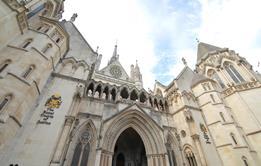
- 1
- 2
- 3
- 4
 Currently
reading
Currently
reading
FCA business interruption test case: Day 5 - as it happened
- 6
- 7
- 8






















































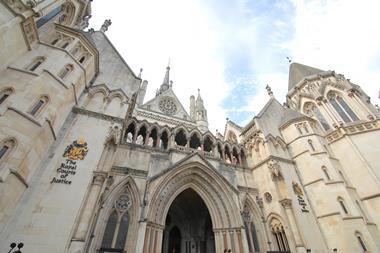
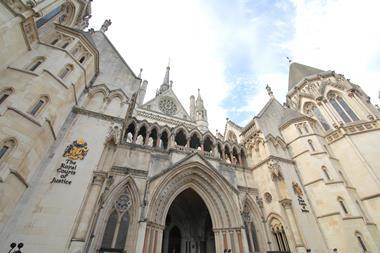
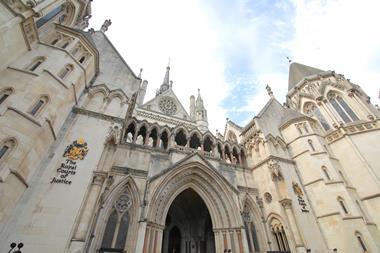



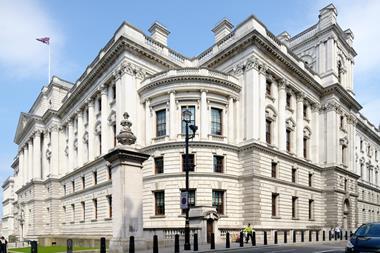







No comments yet